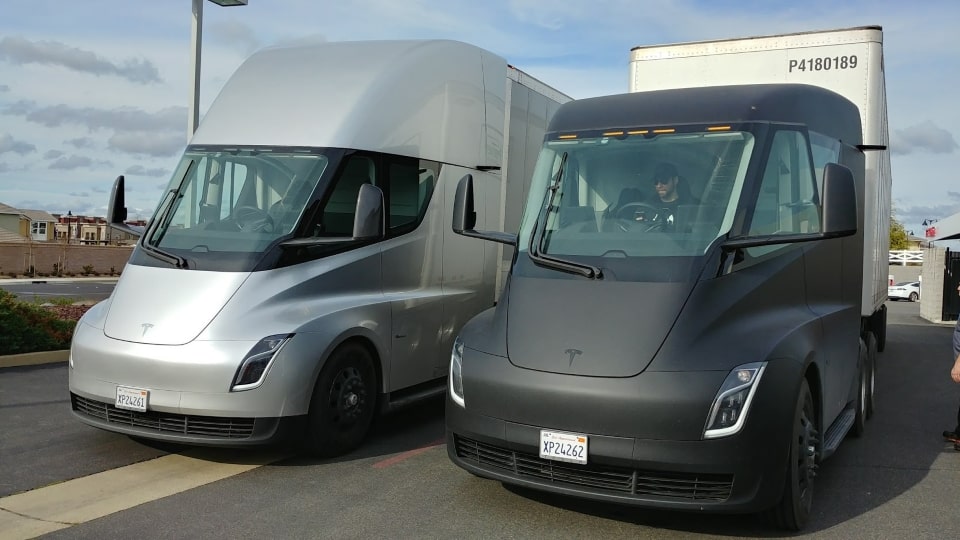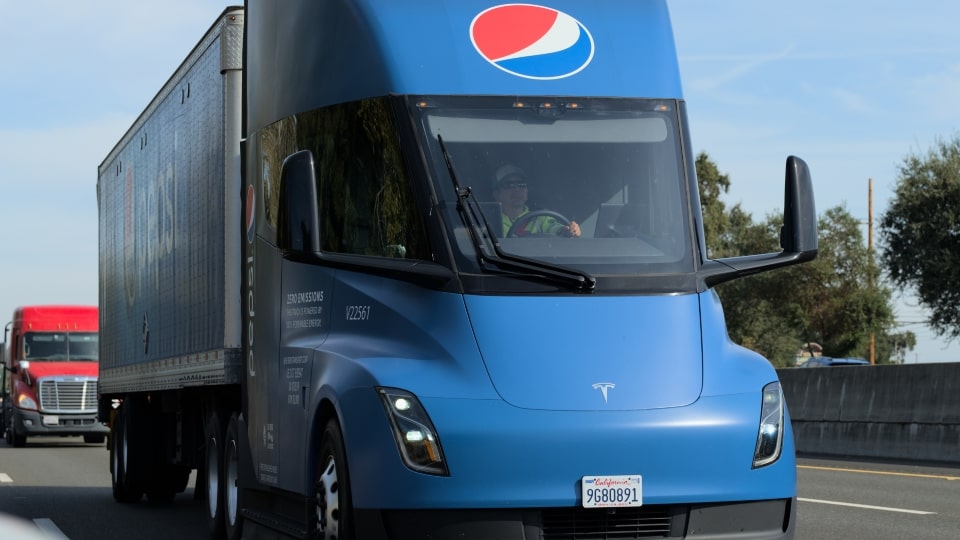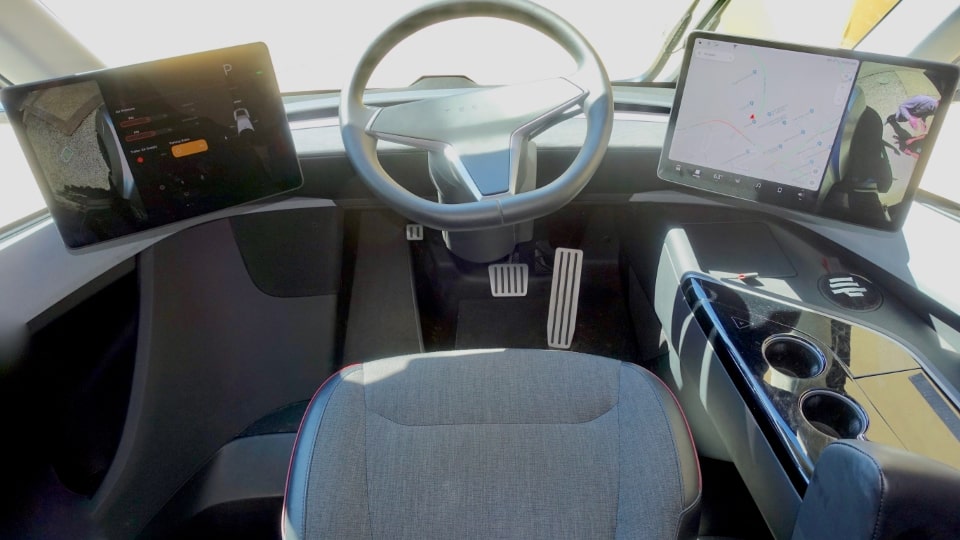Tesla Semi Truck: Revolutionizing the Trucking Industry

In the ever-evolving world of logistics and transportation, the Tesla Semi Truck is poised to revolutionize the industry. This electric truck not only promises to reduce greenhouse gas emissions but also offers substantial cost savings and superior performance compared to traditional diesel trucks. In this comprehensive guide, we delve into the key features of the Tesla Semi, its advantages over conventional trucks, and the broader implications for sustainability in freight transportation.
Unveiling the Tesla Semi Truck

The Tesla Semi Truck boasts several innovative features that set it apart from traditional diesel trucks. These include advanced battery technology, rapid acceleration, and a focus on safety and efficiency. The electric drivetrain ensures lower fuel costs and fewer maintenance requirements, making it an attractive option for fleet operators.
The Semi’s advanced battery technology not only extends its range but also integrates seamlessly with Tesla’s network of Megachargers, reducing downtime and enhancing operational efficiency.
The Economic Impact of the Tesla Semi
One of the significant benefits of the Tesla Semi is its potential for substantial cost savings. With lower fuel expenses, reduced maintenance needs, and potential government incentives for adopting electric vehicles, businesses can achieve a notable reduction in operating costs over time.
Beyond the obvious savings, companies can leverage predictive maintenance features, reducing unexpected breakdowns and optimizing fleet utilization
Performance and Environmental Benefits
The Tesla Semi Truck is designed with a strong emphasis on sustainability. By reducing greenhouse gas emissions and noise pollution, it contributes significantly to corporate sustainability goals. Additionally, its superior acceleration and payload capacity enhance overall performance, making it a formidable competitor in the trucking industry.
The environmental benefits extend beyond emissions. The Semi’s quiet operation can lead to fewer noise complaints and better working conditions for drivers and local communities.
Innovations in Fleet Management
The Tesla Semi Truck’s integration with Tesla’s fleet management software offers real-time tracking and efficiency optimization. This integration allows for better route planning, fuel management, and overall fleet coordination.
Real-time data can improve decision-making processes, enabling fleet managers to respond swiftly to changing conditions and optimize delivery schedules.
Market Adoption and Future Trends
While the Tesla Semi Truck presents numerous benefits, its adoption faces challenges such as initial investment costs and the need for a robust charging infrastructure. However, the growing demand for electric trucks and advancements in technology present significant opportunities for market penetration.
The competitive landscape will see traditional manufacturers innovating in response to Tesla’s advancements, potentially leading to industry-wide improvements in electric truck technology and infrastructure.
Trucking Safety: Reducing Accidents with Advanced Technology
In the trucking industry, safety is paramount. Advanced technologies are playing a crucial role in reducing accidents and enhancing the overall safety of truck operations. By integrating modern systems such as collision avoidance, driver assistance, and automated driving technologies, the industry is making significant strides toward safer roads and more efficient operations.
Enhancing Safety with Collision Avoidance Systems

Collision avoidance systems are one of the most significant advancements in trucking safety. These systems utilize a combination of sensors, cameras, and radar technology to detect potential hazards on the road. When a potential collision is detected, the system can alert the driver or automatically apply the brakes to prevent or mitigate the impact.
Predictive analytics enhance these systems by analyzing vast amounts of data from various sources. This allows the system to anticipate dangerous situations before they occur, such as identifying patterns in traffic behavior that precede accidents. For instance, if the system detects erratic driving patterns in nearby vehicles, it can alert the driver to be more cautious or take evasive action.
Automated Driving and Driver Assistance Technologies
Automated driving and driver assistance technologies are revolutionizing the way trucks operate. Features such as lane-keeping assist, adaptive cruise control, and automated emergency braking are becoming standard in modern trucks. These technologies not only enhance safety but also improve driver comfort and reduce fatigue.
Lane-keeping assist ensures that the truck stays within its lane by providing gentle steering inputs if the vehicle begins to drift. Adaptive cruise control maintains a safe following distance from the vehicle ahead, adjusting the truck’s speed as necessary. Automated emergency braking can detect obstacles in the truck’s path and apply the brakes if the driver does not react in time.
Real-Time Monitoring and Telematics
Real-time monitoring and telematics systems provide comprehensive data on driver behavior, vehicle performance, and environmental conditions. This data is invaluable for fleet managers looking to improve safety and efficiency. By monitoring factors such as speed, braking patterns, and route choices, fleet managers can identify risky behaviors and implement corrective measures.
Telematics systems can also provide real-time feedback to drivers, helping them adjust their driving habits to be safer and more efficient. For instance, if a driver is frequently braking hard or accelerating rapidly, the system can alert them to adopt smoother driving techniques.
Market Adoption and Future Trends
The adoption of advanced safety technologies in the trucking industry is growing, but it faces several challenges. The initial investment costs for these technologies can be high, and there is a need for widespread infrastructure to support their implementation. However, the potential benefits in terms of reduced accident rates and enhanced safety are driving the industry forward.
While the initial costs of implementing advanced safety technologies can be prohibitive for some companies, the long-term savings and safety benefits often outweigh these costs. As technology becomes more affordable and widespread, we can expect to see greater adoption across the industry. Additionally, regulatory pressures and increasing demand for safer roads are pushing companies to invest in these technologies.
As technology evolves, we can expect to see even more sophisticated safety features integrated into trucks. For example, the future may bring fully autonomous trucks capable of navigating complex routes with minimal human intervention. These advancements could significantly reduce the number of accidents caused by human error, which is a major factor in most road accidents.
Whether you need general freight moving, auto transportation, specialized services for oversized vehicles, construction truck transport, car storage, landoll services, or towing, we’re here to help. Call us now for a free consultation!
FAQ Section: Addressing Your Top Concerns
How does the Tesla Semi Truck improve cost efficiency for businesses?
The Tesla Semi Truck offers significant cost savings through lower fuel expenses, reduced maintenance needs, and potential government incentives for electric vehicle adoption.
What are the key safety features of modern trucks?
Modern trucks are equipped with collision avoidance systems, driver assistance technologies, and automated driving features, all of which contribute to increased safety and reduced accident rates.
How does real-time monitoring enhance trucking safety?
Real-time monitoring provides valuable data on driver behavior and vehicle performance, allowing companies to coach drivers and improve safety practices, ultimately reducing the risk of accidents.
What challenges does the Tesla Semi Truck face in market adoption?
Challenges include the initial investment cost and the need for a robust charging infrastructure. However, the growing demand for electric trucks and advancements in technology present significant opportunities for market penetration.
How do predictive analytics and AI contribute to trucking safety?
Predictive analytics and AI can analyze data to anticipate and mitigate risks, potentially reducing the occurrence of accidents and improving overall safety in the trucking industry.
Follow us on Instagram for more insights and updates on everything freight @lasvegasexpedited.
